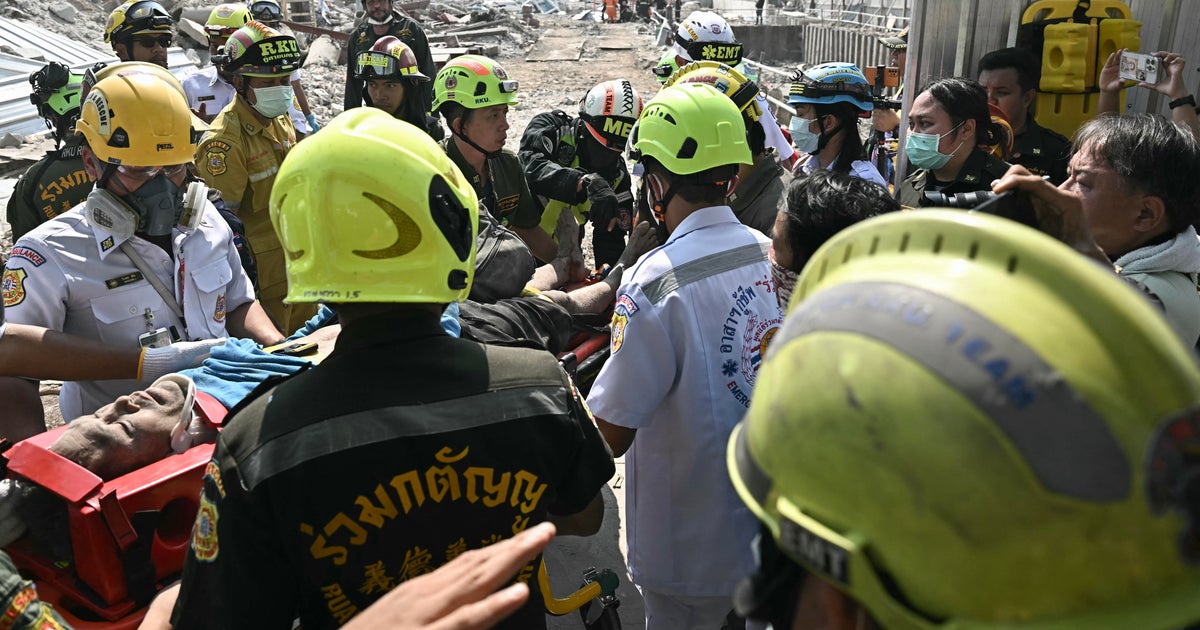Yellowstone flooding takes out bridge, washes out roads and prompts evacuations
Massive floodwaters ravaged Yellowstone National Park and nearby communities Monday, washing out roads and bridges, cutting off electricity and forcing visitors to evacuate parts of the iconic park at the height of summer tourist season.
All entrances to Yellowstone were closed due to the deluge, caused by heavy rains and melting snowpack, while park officials ushered tourists out of the most affected areas. There were no immediate reports of injuries.
Some of the worst damage happened in the northern part of the park and Yellowstone's gateway communities in southern Montana. National Park Service photos of northern Yellowstone showed a landslide, a bridge washed out over a creek, and roads badly undercut by churning floodwaters of the Gardner and Lamar rivers.
There were no immediate reports of injuries, though dozens of stranded campers had to be rescued by raft in south-central Montana.
The flooding cut off road access to Gardiner, Montana, a town of about 900 people near the confluence of the Yellowstone and Gardner rivers, just outside Yellowstone's busy North Entrance.
At a cabin in Gardiner, Parker Manning of Terra Haute, Indiana, got an up-close view of the water rising and the river bank sloughing off in the raging Yellowstone River floodwaters just outside his door.
"We started seeing entire trees floating down the river, debris," Manning told The Associated Press. "Saw one crazy single kayaker coming down through, which was kind of insane."
The Yellowstone River at Corwin Springs crested at 13.88 feet (4.2 meters) Monday, higher than the previous record of 11.5 feet (3.5 meters) set in 1918, according the the National Weather Service.
Floodwaters inundated a street in Red Lodge, a Montana town of 2,100 that's a popular jumping-off point for a scenic, winding route into the Yellowstone high country. Twenty-five miles (40 kilometers) to the northeast, in Joliet, Kristan Apodaca wiped away tears as she stood across the street from a washed-out bridge, The Billings Gazette reported.
The log cabin that belonged to her grandmother, who died in March, flooded, as did the park where Apodaca's husband proposed.
"I am sixth-generation. This is our home," she said. "That bridge I literally drove yesterday. My mom drove it at 3 a.m. before it was washed out."
Yellowstone officials were evacuating the northern part of the park, where roads may remain impassable for a substantial length of time, park Superintendent Cam Sholly said in a statement.
But the flooding affected the rest of the park, too, with park officials warning of yet higher flooding and potential problems with water supplies and wastewater systems at developed areas.
"We will not know timing of the park's reopening until flood waters subside and we're able to assess the damage throughout the park," Sholly said in the statement.
The park's gates will be closed at least through Wednesday, officials said. It is unclear how many visitors have been forced to leave the park.
The rains hit right as summer tourist season was ramping up. June, at the onset of an annual wave of over 3 million visitors that doesn't abate until fall, is one of Yellowstone's busiest months.
Remnants of winter — in the form of snow still melting off and rushing off the mountains — made for an especially bad time to get heavy rain.
Yellowstone got 2.5 inches (6 centimeters) of rain Saturday, Sunday and into Monday. The Beartooth Mountains northeast of Yellowstone got as much as 4 inches (10 centimeters), according to the National Weather Service.
"It's a lot of rain, but the flooding wouldn't have been anything like this if we didn't have so much snow," said Cory Mottice, meteorologist with the National Weather Service in Billings, Montana. "This is flooding that we've just never seen in our lifetimes before."
The rain will likely abate while cooler temperatures lessen snowmelt in coming days, Mottice said.
In south-central Montana, flooding on the Stillwater River stranded 68 people at a campground. Stillwater County Emergency Services agencies and crews with the Stillwater Mine rescued people Monday from the Woodbine Campground by raft. Some roads in the area are closed due to flooding and residents have been evacuated.
"We will be assessing the loss of homes and structures when the waters recede," the sheriff's office said in a statement.
The flooding happened while other parts of the U.S. burned in hot and dry weather. More than 100 million Americans were being warned to stay indoors as a heat wave settles over states stretching through parts of the Gulf Coast to the Great Lakes and east to the Carolinas.
Elsewhere in the West, crews from California to New Mexico battled wildfires in hot, dry and windy weather.
Scientists say climate change is responsible for more intense and more frequent extreme events such as storms, droughts, floods and wildfires, though single weather events usually cannot be directly linked to climate change without extensive study.






